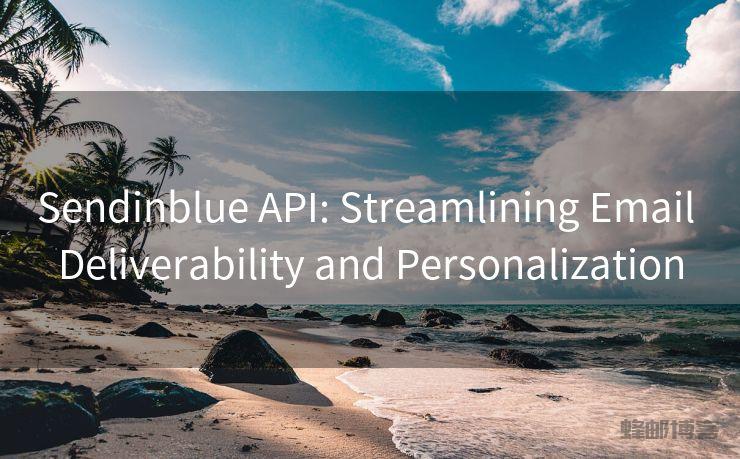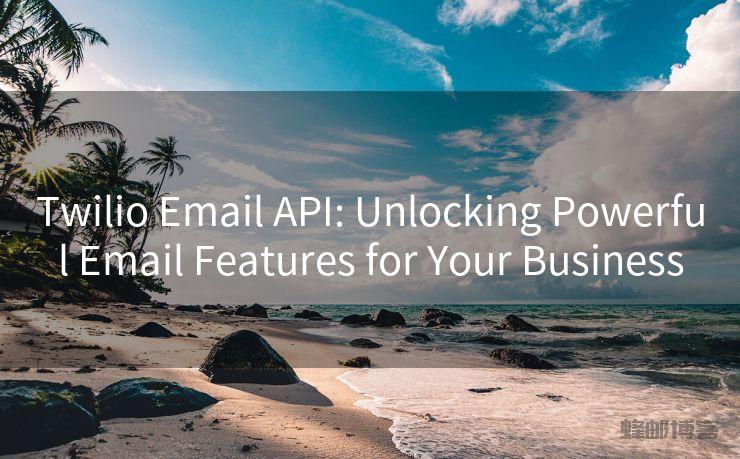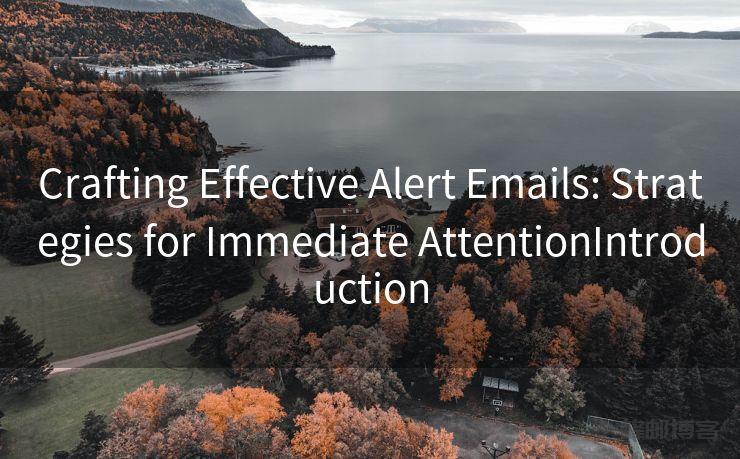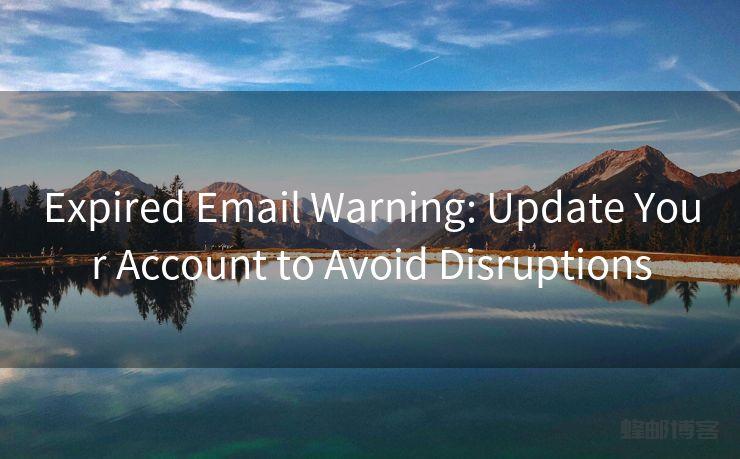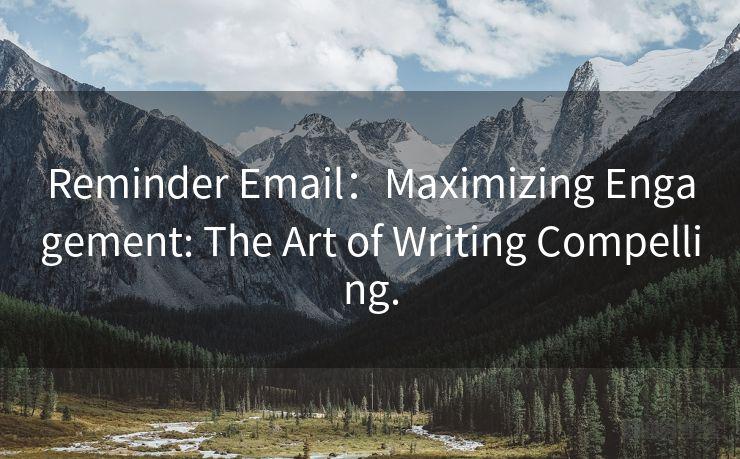Alert Email Best Practices: Ensuring Timely and Effective Communications
Hello everyone, I’m Kent, the website admin. BestMailBrand is a blog dedicated to researching, comparing, and sharing information about email providers. Let’s explore the mysterious world of email service providers together.




Alert Email Best Practices: Ensuring Timely and Effective Communications
1. Alert Email: Understand the Purpose
Before drafting an alert email, it's crucial to understand its purpose. An alert email is typically used to notify recipients about important events, updates, or issues that require immediate attention. Whether it’s a system outage, a security breach, or an urgent update, the goal of an alert email is to convey critical information swiftly and clearly. Understanding the purpose helps in crafting messages that are direct, relevant, and actionable.
2. Alert Email: Craft Clear and Concise Subject Lines
The subject line of an alert email is the first thing recipients see, and it plays a significant role in determining whether the email will be opened promptly. A good subject line should be clear, concise, and indicative of the email’s content. Avoid using vague terms or technical jargon that might confuse the recipient. For example, instead of saying “System Issue,” a more effective subject line would be “Urgent: Server Downtime Scheduled for Maintenance Tonight.”
3. Alert Email: Use a Structured Format
The format of an alert email should be structured to ensure that important information is easy to find and understand. A well-organized alert email typically includes:
- Introduction: Briefly state the nature of the alert.
- Details: Provide specific information about the issue or update.
- Impact: Explain how it affects the recipients.
- Action Required: Clearly state any actions recipients need to take.
- Contact Information: Offer details on how to reach support or obtain more information.
A structured format helps recipients quickly grasp the necessary information and respond appropriately.
4. Alert Email: Prioritize Key Information
In an alert email, it's essential to prioritize key information to ensure that the most important details are highlighted. Use bullet points or numbered lists to emphasize critical points such as the nature of the issue, steps to resolve it, or deadlines for required actions. Prioritizing key information helps recipients quickly understand the urgency and implications of the alert.
5. Alert Email: Maintain a Professional Tone
While alert emails often deal with urgent or distressing situations, maintaining a professional and composed tone is essential. Avoid overly dramatic language or unnecessary panic. Instead, focus on delivering the information clearly and calmly. This approach helps maintain trust and ensures that recipients take the necessary actions without added stress.
6. Alert Email: Ensure Timeliness
Timeliness is crucial for an alert email. The sooner recipients are informed about an issue or update, the better they can respond. Ensure that alert emails are sent as soon as the relevant information is available. Delays in communication can exacerbate problems or lead to missed deadlines. Implement processes to ensure that alert emails are reviewed and dispatched promptly.
7. Alert Email: Test for Clarity and Accuracy
Before sending an alert email, it's important to test it for clarity and accuracy. Review the content to ensure that all information is correct and that there are no errors or ambiguities. If possible, have a colleague review the email to provide feedback on its effectiveness. Testing helps prevent misunderstandings and ensures that the message is communicated as intended.
8. Alert Email: Use Visuals Wisely
Incorporating visuals such as charts or graphs can help clarify complex information in an alert email. However, use visuals judiciously to avoid cluttering the email. Ensure that any visuals used are relevant and enhance the recipient’s understanding of the alert. Avoid using large images or attachments that might delay the email’s delivery or be blocked by email filters.
9. Alert Email: Follow Up as Needed
Sometimes, a single alert email is not enough to fully address a situation. Be prepared to send follow-up emails if additional information becomes available or if the status of the issue changes. Clearly reference the original alert email in follow-up messages and provide updated information as necessary. Follow-ups help keep recipients informed and ensure that they remain aware of ongoing developments.
10. Alert Email: Monitor and Evaluate Effectiveness
After sending an alert email, monitor its effectiveness by tracking metrics such as open rates and response times. Evaluate how well the alert achieved its intended purpose and gather feedback from recipients if possible. Use this information to refine your alert email practices and improve future communications.

11. Alert Email: Ensure Compliance with Regulations
Depending on your industry and the nature of the alert, there may be regulatory requirements that govern how and when you send alert emails. Ensure that your alert email practices comply with any relevant regulations or standards. This might include requirements related to data privacy, notification timelines, or content accuracy.
12. Alert Email: Incorporate Automation Where Appropriate
For recurring or predictable alerts, consider incorporating automation to streamline the process. Automated systems can help ensure that alert emails are sent promptly and consistently. However, be cautious with automation to ensure that the messages remain relevant and personalized. Regularly review and adjust automated alerts to align with current needs and standards.
13. Alert Email: Personalize Where Possible
While alert emails often deal with general information, personalizing the message for the recipient can enhance its impact. Use recipient names or specific details related to their roles or departments to make the alert more relevant. Personalization helps recipients feel that the alert is tailored to their needs and increases the likelihood of a prompt response.
14. Alert Email: Maintain an Archive for Reference
Keeping an archive of past alert emails can be beneficial for future reference. An archive allows you to track the history of alerts, review past communications, and analyze trends. This information can be valuable for evaluating the effectiveness of your alert email practices and making improvements.
By following these best practices, you can ensure that your alert emails are timely, clear, and effective in communicating important information.




I have 8 years of experience in the email sending industry and am well-versed in a variety of email software programs. Thank you for reading my website. Please feel free to contact me for any business inquiries.
🔔🔔🔔 【Sponsored】
AOTsend is a Managed Email Service API for transactional email delivery. 99% Delivery, 98% Inbox Rate.
Start for Free. Get Your Free Quotas. Pay As You Go. $0.28 per 1000 Emails.
You might be interested in:
Why did we start the AOTsend project, Brand Story?
What is a Managed Email API, How it Works?
Best 24+ Email Marketing Service (Price, Pros&Cons Comparison)
Best 25+ Email Marketing Platforms (Authority,Keywords&Traffic Comparison)
Scan the QR code to access on your mobile device.
Copyright notice: This article is published by AotSend. Reproduction requires attribution.
Article Link:https://www.bestmailbrand.com/post12.html

